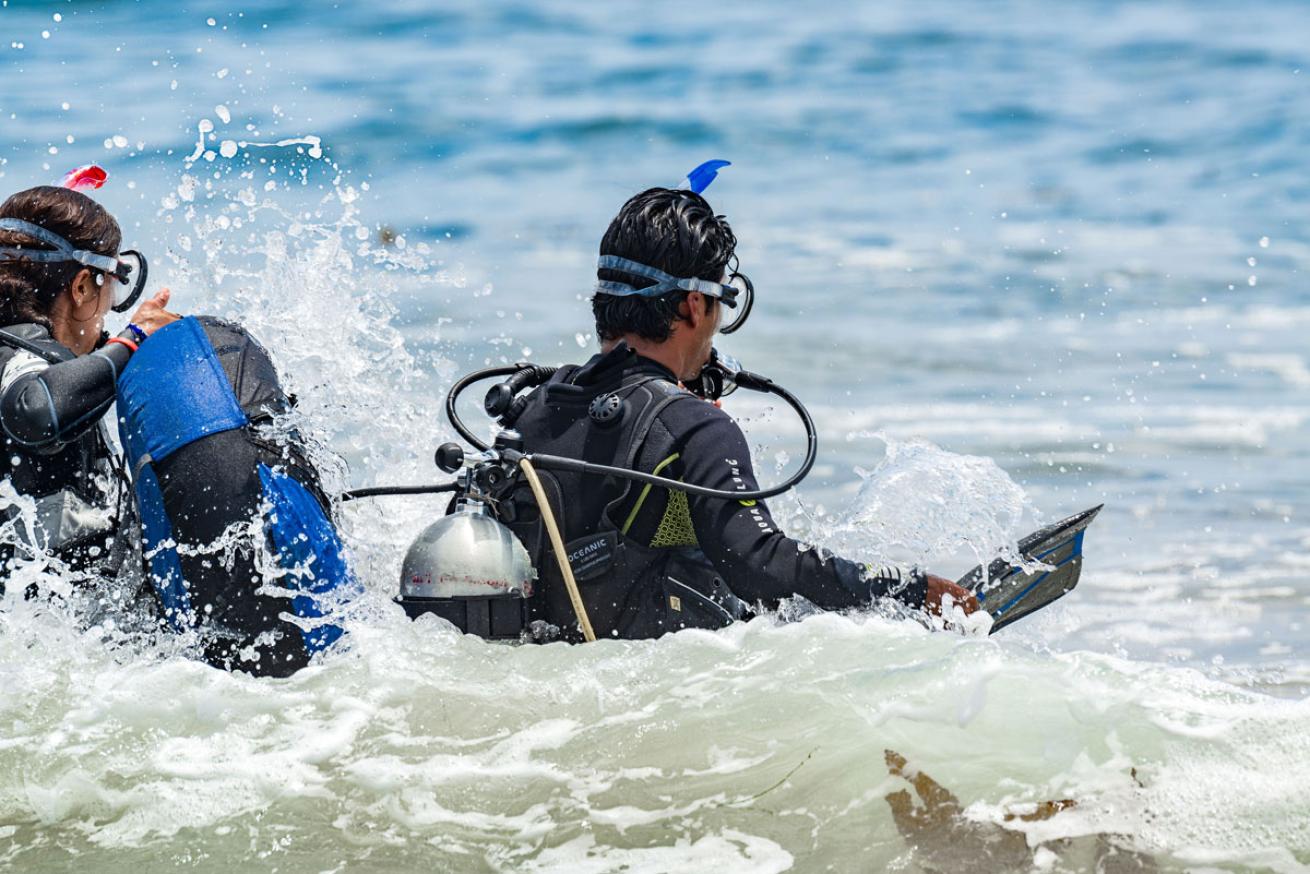How to Make a Perfect Shore Entry for Scuba Diving
Some world-class dive sites are located just off the shore, letting you explore without ever having to board a boat. But with shore diving comes some added considerations. Here's how to make a safe surf entry.

PADILearn tips and tricks to perfect your shore-diving techniques!
STEP 1: Gear Up!
Put on all your gear except fins before approaching the water so you’re prepared to be a scuba diver as soon as you’re wet. Gear should be clipped in close: a flying console could smack your head in the surf. Make sure fin straps are tight.
Gearing up without getting sand in everything can be difficult. You and your buddy can steady each other so neither has to sit down. Some divers suit up from their vehicle, others bring a tarp or similar ground covering.
READ MORE: The Beauty of Bonaire Diving
STEP 2: Check the Surf, Dude!
Watch the waves for a few minutes; a set of bigger waves will be followed by a lull of smaller ones. A shorter period between waves implies faster, harder-hitting waves. Look for where the rocks are, and pick your entry (and exit) point. Finally, after evaluating the conditions, ask yourself: Is it safe today? Am I prepared for this dive? Don’t let enthusiasm overrule good judgment.
STEP 3: Go!
But before you do, identify a landmark or place a marker at the shore point where you are entering, so you can find it at the end of your dive.
Then, in ankle- to knee-deep water, put on your fins, move out to where you can still stand easily and wait for a bigger set of waves to begin declining. If you wait for the lull of smaller waves to begin, you might be caught by the next big set. Put your regulator in your mouth, clamp your teeth firmly on the mouthpiece and walk backwards or sideways while looking over your shoulder. Tow your float behind you, don’t push it ahead-the waves could throw it in your face. Don’t walk too close to your buddy, and don’t be behind him; if he gets tumbled, so will you.
READ MORE: 10 FAQs for Scuba Divers
STEP 4: Duck and Cover
When a wave comes, spread your legs, hold your mask with your hand, lower your center of gravity and lean into the wave. Do not try to swim over breakers. You may be able to duck under big waves. On a sandy beach, it’s usually best to walk out as far as possible with an empty BC, then swim out under the waves, where water flow actually draws you down and behind the wave. Big waves on rocks? Either forget it or find a protected area, channel or headland where a safe entry is possible.
STEP 5: Check Your Gear
Try to get past the surf line as quickly as possible. If you don’t make it and are tossed back, rest and try again; you’ll probably do better the second time. Once through the surf, pause to recheck your equipment for security and adjustment (even moderate surf can displace it) and the presence of sand, especially in your regulator second stage and fins, where it can cause significant damage to your wet feet by the end of a dive.










